Sciatica- What It is, Remedies, Alternate therapies, rehab
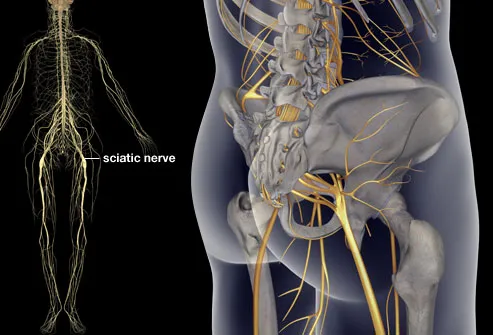
What Is Sciatica?
Sciatica refers to back pain caused by a problem with the sciatic nerve. This is a large nerve that runs from the lower back down the back of each leg. When something injures or puts pressure on the sciatic nerve, it can cause pain in the lower back that spreads to the hip, buttocks, and leg. Up to 90% of people recover without surgery.

Symptoms of Sciatica
The most common symptom of sciatica is lower back pain that extends through the hip and buttock and down one leg. The pain usually affects only one leg and may get worse when you sit, cough, or sneeze. The leg may also feel numb, weak, or tingly at times. The symptoms of sciatica tend to appear suddenly and can last for days or weeks
Sciatica or Other Back Pain?
Up to 85% of Americans experience some type of back pain during their lives. But this doesn't always involve the sciatic nerve. In many cases, back pain is the result of overextending or straining the muscles in the lower back. What most often sets sciatica apart is the way the pain radiates down the leg and into the foot. It may feel like a bad leg cramp that lasts for days.
Who Gets Sciatica?
Most people who get sciatica are between the ages of 30 and 50. Women may be more likely to develop the problem during pregnancy because of pressure on the sciatic nerve from the developing uterus. Other causes include a herniated disk and degenerative arthritis of the spine.
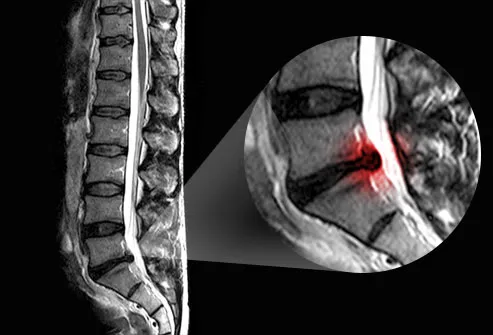
Cause: Herniated Disk
The most common cause of sciatica is a herniated disk. Disks act like cushions between the vertebrae of your spine. These disks get weaker as you age and become more vulnerable to injury. Sometimes the gel-like centre of a disk pushes through its outer lining and presses on the roots of the sciatic nerve. About 1 in 50 people will get a herniated disk at some point in life. Up to a quarter of them will have symptoms that last more than 6 weeks.
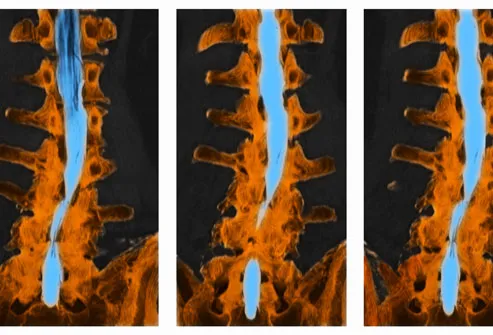
Spinal Stenosis
Natural wear and tear of the vertebrae can lead to a narrowing of the spinal canal. This narrowing, called spinal stenosis, may put pressure on the roots of the sciatic nerve. Spinal stenosis is more common in adults over age 60.
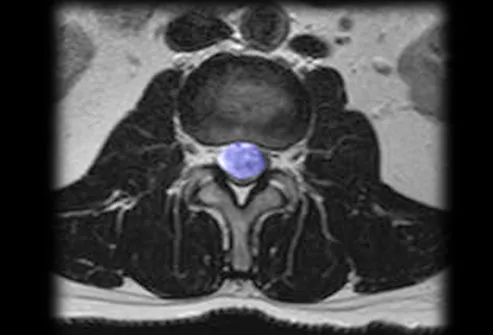
Spinal Tumours
In rare cases, sciatica may result from tutors growing inside or along the spinal cord or sciatic nerve. As a tumour grows, it may put pressure on the nerves that branch off from the spinal cord.
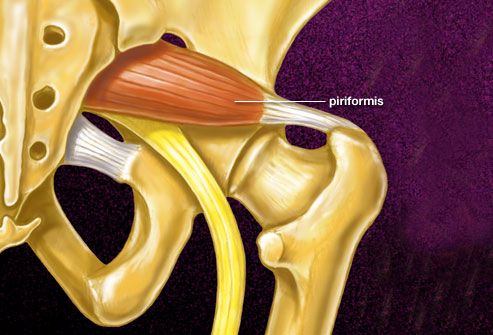
Piriformis Syndrome
The piriformis is a muscle found deep inside the buttocks. It connects the lower spine to the upper thigh bone and runs directly over the sciatic nerve. If this muscle goes into spasm, it can put pressure on the sciatic nerve, triggering symptoms of sciatica. Piriformis syndrome is more common in women.
A Fat Wallet Can Trigger Piriformis
You might not think of too much cash as a source of pain, but a fat wallet can trigger piriformis syndrome. The condition can affect men who wear their wallet in the back pocket of their pants. This puts chronic pressure on the piriformis muscle and can aggravate the sciatic nerve over time. You can avoid this problem by keeping your wallet in a front pocket or jacket pocket.
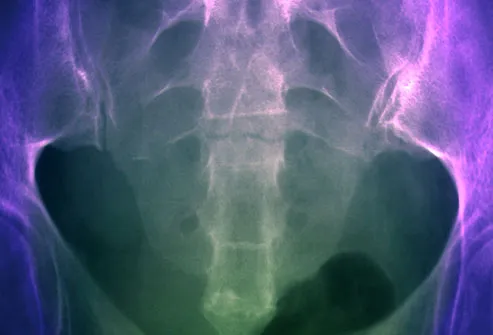
Injury or Infection
Other causes of sciatica include muscle inflammation, infection, or injury, such as a fracture. In general, any condition that irritates or compresses the sciatic nerve can trigger symptoms. In some cases, no specific cause of sciatica can be found.
Diagnosing Sciatica
To determine whether you have sciatica, your doctor will ask you how your pain started and where exactly it is located. You may be asked to squat, walk on your heels or toes, or raise your leg without bending the knee. These muscle tests can help your doctor determine if it is the sciatic nerve that is irritated.
Diagnostic Imaging
Your doctor may order imaging tests, such as an MRI, to get more information about the location and cause of the irritated nerve. An MRI can show the alignment of vertebral disks, ligaments, and muscles. A CT scan using contrast dye can also provide a useful picture of the spinal cord and nerves. Determining the cause of sciatica can help guide the course of treatment. X-rays can help identify bony abnormalities but can't detect nerve problems.
Complications Related to Sciatica
If you develop a loss of bladder or bowel control, contact your doctor right away. This can be a sign of a medical emergency that requires surgery to avoid permanent damage. Fortunately, this complication is rare. Most cases of sciatica go away within a few days or weeks and cause no lasting harm.
Sciatica Relief: Ice and Heat
There are steps you can take at home to ease the pain of sciatica. A heating pad or ice pack may be especially helpful. Apply the heat or ice for about 20 minutes every two hours. Experiment to see which provides more relief, or try alternating between heat and ice.
Medication
Over-the-counter pain relievers can provide short-term relief from sciatica. Acetaminophen and non-steroidal anti-inflammatory drugs (NSAIDs), such as aspirin, ibuprofen, and naproxen are options. Your doctor may give a steroid injection to further reduce the inflammation.
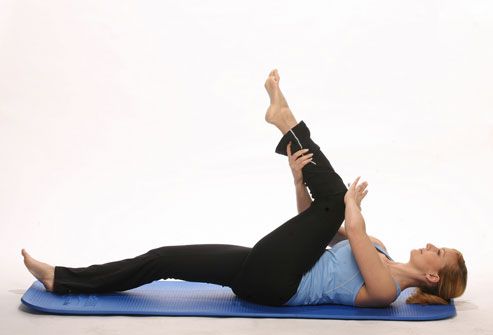
Stretching Exercise To Give Relief
While your sciatica is healing, try to remain active. Motion can actually help reduce inflammation and pain. A physical therapist can show you how to gently stretch the hamstring and lower back. Depending on your medical condition, certain exercises may not be recommended. Your doctor may also recommend taking short walks.
Injections
In severe cases, a doctor may recommend injecting steroids into the spine area to reduce inflammation. It delivers the medication directly to the area around the sciatic nerve.
Surgery
If your sciatica is due to a herniated disk, and it's still causing severe pain after four to six weeks, surgery may be an option. The surgeon will remove a portion of the herniated disk to relieve the pressure on the sciatic nerve. About 90% of patients get relief from this type of surgery. Other surgical procedures can relieve sciatica caused by spinal stenosis.
Sciatica Rehab
After back surgery, you will generally need to avoid driving, lifting, or bending forward for about a month. Your doctor may recommend physical therapy to help you strengthen the muscles in the back. Once your recovery is complete, there's an excellent chance you'll be able to get back to all your usual activities.
Complementary Therapies
There is evidence that acupuncture, massage, yoga, and chiropractic adjustments can relieve typical lower back pain. But more research is needed to determine whether these therapies are helpful for sciatica.
Preventing Sciatica
If you've had sciatica once, there's a chance it will return. But there are steps you can take to reduce the odds:
Exercise regularly.
Maintain good posture.
Bend at the knees to lift heavy objects.
These steps can help you avoid back injuries that may lead to sciatica.
ps- this is only for information, always consult you physician before having any particular food/ medication/exercise/other remedies.
ps- those interested in recipes are free to view my blog-
http://gseasyrecipes.blogspot.com/
for info about knee replacement, you can view my blog-
http://Knee replacement-stick club.blogspot.com/
for crochet designs
http://My Crochet Creations.blogspot.com/
I've not given details about designs, but those interested are free to mail me for the same.
http://gseasyrecipes.blogspot.com/
for info about knee replacement, you can view my blog-
http://Knee replacement-stick club.blogspot.com/
for crochet designs
http://My Crochet Creations.blogspot.com/
I've not given details about designs, but those interested are free to mail me for the same.
Labels: acupuncture, chiropractic, Exercises, hamstring, heat, ice pack, infections, injury, massage, numbness, Piriformis Syndrome, rehab, spinal stenosis, stretching, surgery, tingling sensation, tumours, yoga

0 Comments:
Post a Comment
<< Home